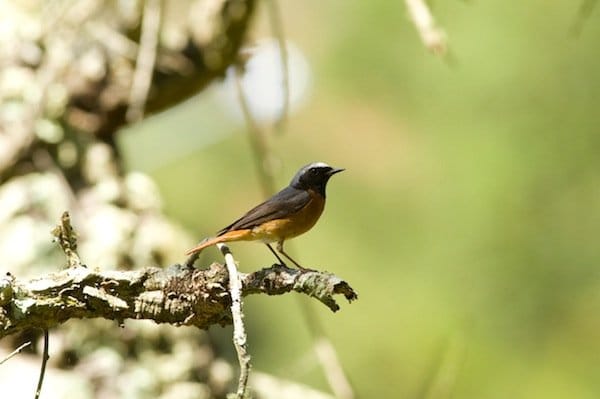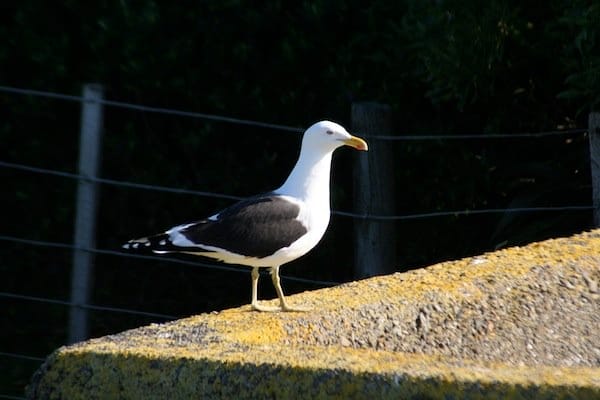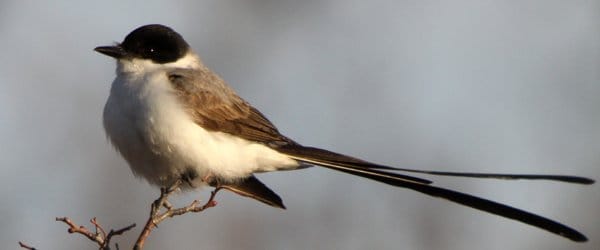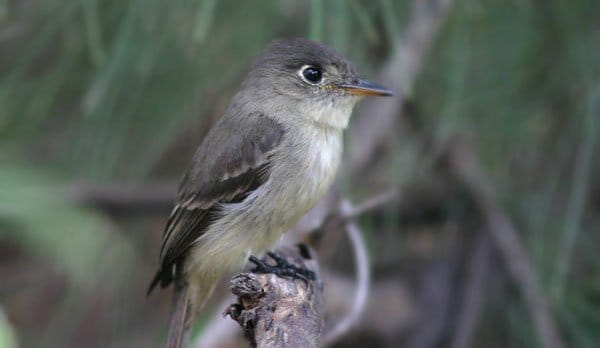All twitchers will experience it at some stage or another. That most dreaded of disappointments. The dip. For those that might not fully comprehend, the birding slang-term to “dip” or to “dip out on” a bird is to go looking for a particular species and not find it. That bird can then be referred to as a”dip”, the noun version of the word. There are small dips, big dips, memorable dips, disastrous dips, expensive dips, exhausting dips, sad dips. You get the picture. Dips are not cool. They can be interpreted mathematically by this simple equation: Bird: 1 ; Birder: 0. Dips are spoken about in hushed tones, if spoken about at all. Some competing birders take delight in the dips of fellow twitchers. And many a birder has been given the death-stare by his/her fellow birders for even mentioning the word on a twitch for a particularly rare species. But some dips are so significant that they become the stuff of legend. Most birders prefer not to recollect their biggest dips but I convinced a few well-known birders to share theirs. And I’ll start with mine, although it literally pains to recall…
It was 2003 and a Common Redstart was reported from the Nossob Rest Camp in the Kgalagadi Transfrontier Park in northern South Africa. I was only one bird shy of the magical 800 number for my Southern African bird list and this was a species that would allow me entry into the exclusive 800 Club (with unlimited access to any airport lounge across the globe, free First Class upgrades on 72 different airlines and a free meal at KFC). So I pleaded with the wife, who was well-pregnant with our first child, and she reluctantly agreed to let me go as long as I was back soon. No problem. It was only 750 miles away from my home in Cape Town. Nothing that couldn’t be achieved through dogged determination and Redbull! Off I went. The bird had been reported the very day I left and I made surprisingly good time, arriving in Nossob in the evening after about 15 hours of straight driving. Two days later I was still searching. Nothing. And then my wife called to say she was in hospital in premature labor!! Back in the car, back to Cape Town at break-neck speed. An unhappy wife, 1,500 miles later and the biggest dip of my birding career! When I finally got to 800, all club benefits had been cancelled due to some loophole in the 800 Club benefits program. Common Redstart 1; James Currie 0.
 Common Redstart by Frank Mclintock
Common Redstart by Frank Mclintock
Gavin Bieber reports his biggest dip as follows. It was late October 1999 and Millennium Fever was in the air. But there was something else in the air too, Twitching Fever. And Gav had a severe dose of the latter. A Eurasian Dotterel had been reported from Ocean Shores, Washington. This bird had only been recorded in the United States a few times and was listed as a Code 4 by the American Birding Association (Code 4 translates into “make plans to twitch now” for many American birders). Problem was Gavin was in Victoria, Canada over 500 miles away. A different country separated by lots of water. Not to be deterred he drove from Victoria to the ferry. Then paid $60 for the ferry to Vancouver. Then crossed the border and drove the remaining 300 miles or so to Ocean Shores where he arrived at midnight and slept in the car. The next day the bird was nowhere to be found. It was seen every day for two weeks on either side of that one fateful day in late October 1999. Eurasian Dotterel 1, Gavin Bieber 0.
Not to be outdone by Gavin, Paul and Anita Guris were outfoxed by a Cuban vagrant not once but twice! In fact it was two weekends in a row in March of 1995. The bird in question was a Cuban Pewee that had showed up in Spanish River Park, close to where I now live in Palm Beach County Florida. Unlike Gavin’s bird, the Cuban Pewee was an ABA Code 5 (translates into “forget about any plans and leave immediately” for many hard-core birders). This was in fact the very first record of Cuban Pewee in the ABA area and would have been classed back then as a once-in-a-lifetime Mega-tick! And these two frenetic birders were all over it! This is how it worked out for Paul and Anita:
Chase #1: Drove from Blue Bell, Pennsylvania to Boca Raton, FL. Roughly 1,200 miles and 18 hours. The bird was seen the day before. Drove back 1,200 miles and 18 hours.
Chase #2: Bird was spotted again. Drove to Philadelphia. Int’l Airport, flew to Orlando, FL on a discount airline full of screaming kids and drunken parents headed for Disney so it felt like weeks. To quote Marisa Tomei in My Cousin Vinny, “Oh my gawd! What a frikkin’ nightmare!”. Then drove four hours to Boca Raton, FL. Missed the bird AGAIN. Anita still makes impolite noises when the name of this species comes up. Cuban Pewee 2; Paul and Anita Guris 0
Mike Freiberg couldn’t believe his luck when he had the opportunity to chase two Code 4 rarities not too far from his home in Philadelphia, Pennsylvania. I say not too far because he only had to drive several hundred miles for both birds, spending fourteen hours searching and driving like a mad man. First he drove to Bombay Hook National Wildlife Refuge, Delaware to twitch a possible Little Egret that had showed up. No luck but Mike knew he could get the “predictable” Kelp Gull at Sandgates, Maryland as the tide began to pull out at Bombay. The predictable Kelp Gull never showed up in the four hours he spent at Sandgates. At that point, the tide was changing to high tide in Delaware so he wisely decided to chase the Little Egret, again. As he was pulling into Bombay Hook he met some birders who told him that the egret roost ahead of us had the bird in question. He pulled up, the only birder there besides his uncle who had come along for the ride. Well, as he got out the car he inadvertently slammed the door and 300 egrets took flight. Major disappointment. Little Egret 2; Mike Freiberg 0. Kelp Gull 1; Mike Freiberg 0.
 Kelp Gull by Duncan Wright
Kelp Gull by Duncan Wright
Dave Faike lived up to his last name when he went on a fake dip. Its one thing to dip. But a fake dip! C’mon, how much worse can that get! Dave writes as follows, “I vividly recall driving for a couple of days one January, over icy roads through intermittent snows during bitter cold temperatures and bracing winds, from Central Idaho across 630 miles (one-way) of sagebrush-covered high desert in the middle of nowhere to whatever refuge was located in S.Oregon in order to search for an RBA-posted, confirmed Whooping Swan, spending hours observing virtually every swan from various vantage points around a mostly frozen refuge, four-wheeling down snow-covered roads, freezing ears, noses, lips toes and fingertips off, staying overnight in that ratty little motel .. only to conclude that somebody had misidentified a Bewick’s Tundra Swan. I also remember watching a car loaded with birders arrive the following morning, use their window-mounted spotting scopes from the confines of their vehicle without ever turning off its motor, eventually spot the same Bewick’s Swan, high-five each other and drive away.” C’mon! Bewick’s Swan 1; Dave Faike 0.
Rich Hoyer, like Paul and Anita, dipped twice in close succession. The bird in question? A Fork-tailed Flycatcher. Rich acidly writes the following, “Total miles driven in two attempts: 720. First time left Bandon Oregon late morning. Next day from Corvallis, Oregon. Destination: Ilwaco, Washington. First drive was 7 hours, there 3.5 hours back. Second was 3.5 hours each way, total 17.5 hours driving on the 13th and 14th September 2005. Bird was found on the 12th, and again after I left there on the 13th. So I returned the next day but it was never seen. I still haven’t seen it in the U.S.” And all this – just for a Code 3 bird. Talk about a nemesis-bird Rich! Fork-tailed Flycatcher 1; Rich Hoyer 0.
 A Fork-tailed Flycatcher by Corey Finger
A Fork-tailed Flycatcher by Corey Finger
And lastly, I had to include Richard Crossley’s two biggest dips. Both for the same beautiful bird – a Ross’s Gull. Way back when he was still young and handsome, he hitchhiked from Plymouth, England to Cley, Norfolk – 750 miles round-trip. Always concerned with his own personal safety, he only hitchhiked at night so he could bird during the day. Needless to say he dipped. His second attempt for Ross’s Gull was to Filey Brig in Yorkshire. It was a freezing night. After some great hitching, he arrived in the middle of the night, frozen and shaking like a leaf and was left with no choice but to ‘borrow’ someone’s car til daybreak. After spending all day there without seeing the bird, it was a long 350 miles back. (700 miles total). His third try for Ross’s Gull was from Plymouth to Thurso – from the southern tip of England to the northern tip of Scotland (1,600 miles round-trip). After about a total of 3,000 miles hitching on freezing winter nights, he finally got it but not without sacrifice.On the way home from Thurso he got propositioned for his troubles by a male driver looking for love who generously offered him 50 pounds. Richard writes that even though he was flat-broke, he didn’t give in! On this occasion at least. Of course, a few years later a Ross’s Gull turned up 400 meters from where he lived in Plymouth. Ross’s Gull 2; Rich Crossley 1; Creepy Driver 0.
We would love to hear your dips so comment below!














This is a riot, James. Reminds me why I stopped twitching!
@Mike: thanks mate. Its not for the faint-hearted! I myself rarely twitch these days. But when I do I get these strange flashbacks. Nightmares actually.
Hey Jimbo, my biggest dip nightmare always happens in early autumn, when I head down to the atlantic seaboard beach of llanduhdno in search of the african red breasted tits, only to find that they’ve migrated for the winter, that really makes me twitch like mal.
@Thane: This is a respectable blog mate. But glad to see you are still “birding”. Take it easy.
My nightmare bird has been Little Gull. It is a good but not major rarity here in California. I have chased Little Gulls 10-15 times and missed every time. The most memorable was on a rarity chase trip I made to Southern California in 2004 with a friend. There were TWO Little Gulls wintering at Prado Regional Park on the lake along with over a thousand Bonaparte’s Gull. On the day we arrived the birds had been seen daily for a few weeks(and would reappear for weeks after) and we set up to scope the Bonys. After 4-5 hours of scoping every gull on the lake, during which time we relocated a Black-legged Kittiwake that had been seen by only one observer, and wasting most of that day of chasing we gave up. I still have not seen a Little Gull. Little Gull: 10; Cliff Hawley: 0.
Nice one Cliff!
Never heard of them called “dips”, although I have certainly had my share. But the term still doesn’t capture the sense properly for me – maybe Homer Simpsons “Doh!” is closer…
As a birder of over 40 years, my enthusiasm has variously waxed and waned, and my life lists remain modest by current standards (>520 in US lower 48; >1130 worldwide). The upside, I feel, to such intermittent passion has been that my compulsion has not gotten too far out of hand.
Not to rain on any parties, but I personally have a conflict with being a “bird lover” who adores the object to death. That the observer impacts the phenomena is a scientific truth, a practical fact, and a moral consideration. So I have incorporated into my birding the goal of trying to see more birds for fewer resources, particulary miles of excess travel (i.e., added global footprint). My lifetime average is now about 33 miles and $14 per tick. I have thereby convinced myself that my birding is pretty reasonable indulgence, as modern entertainment goes.
The average cost, of course, only increases, but the average mileage has actually declined somewhat in recent years. Average mileage has gone down as I decline to chase local rarities, strive to make the most of day-to-day opportunities, and take the occasional bird-rich vacation to a new and distant locale. I find it less stressful and more satisfying to see a common species where it is common (and in settings more interesting) than to see it as a vagrant that has crossed some arbitrary geopolitical boundary.
This strategy allows me to always have another great (if not BIG) year of new birds to look forward to – in case passions run high!
Cheers and good birding!
Bob Fuld, CT USA
I don’t twitch, so I don’t get those kinds of dips, but I certainly have failed to find birds I’d like to see at good locations for them. Last year I spent a week in Malaysia at Fraser’s Hill and failed to fond a single hornbill! But my worst dip ever was a leopard that my brother, standing next to me, saw and I didn’t.
@Bob: You make some really great points here. Watching our global footprint whilst pursuing our passion is most valid. All too often the lines get blurred between enjoyment and negative impact. I agree with you on the above and have to admit there have been times in the past where I’ve felt more than a twinge of guilt driving many miles to see one bird!
@Duncan: Ah the elusive leopard. Keep at it mate – you’ll see it one day for sure!
A few years back I ditched a friend’s birthday party to chase a Smew near Sonora, California. I drove half the night and was at the pond at the crack of dawn. I stuck around until noon, then I figured that the bird had left and it would behoove me to make the 6.5 hour drive home in the daylight. Of course the thing showed up a half hour after I left!
That’s my only savage dip to date, and I know I’m overdue for another one after knocking out some of our better rarities in the last few years, including Ross’, Ivory, and Little Gulls.
We dipped on a Dipper in the UK last time we were there in 1994!
@Clare, makes you wonder who’s the Dipper and who’s the Dipped, doesn’t it?
I was once o for 3 chasing a Northern Hawk Owl in upstate New York, but finally got it.
My worst “dip” has to be the Smith’s Longspur on Long Island a few years ago. Corey Finger and I had made plans on Presidents Days to drive down from Albany and find this bird which had been very reliable both before and after the day we were there. Man was it cold, and we found many Lapland Longspurs, but the Smith’s was not found. It was also the day I got to meet the famous Mike Bergin for the 1st time. So maybe it wasn’t a complete loss…
@Dingo Behavior I got that Smew in Sonora. Of course that was after missing the bird that had been in Tracy a couple of years earlier. I sat under that gross bridge that smelled like urine for a few hours hoping for a fly-by and saw no diving ducks at all.
@Dingo: That’s pretty wild Dingo!
@Clare and Grant, Mike: My favorite chocolate in the UK used to be called a Dipped Flake. At least neither of you are dipped flakes…
@Will: Maybe it was because you went with Corey :). All birds know he likes KFC and avoid him like the plague.
@Will: I dipped that cursed bird twice (and I really should have remembered to email James about that when he asked us 10,000 Birds birders to share our dipping stories).
@James: Mmm…fried chicken…mmm…
California’s first Ross’s Gull was at the Salton Sea. Ryan Terrill, Leigh Lindstrom and I arrived at Red Hill Marina shortly before day break to see tens of birders jumping up and down and waving while we drove in. We parked, got out, and were asked excitedly “Did you see it? Did you see it?” Apparently the bird flew over our heads while we were driving in, and was never seen again, despite an all-day vigil. So, The Ross’s Gull saw me, but I did not see it.